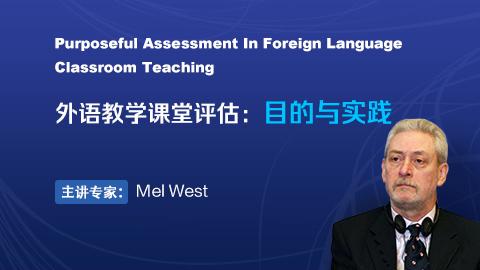Purposeful assessment in foreign language classroom teaching
The purpose of gathering information about students' learning
Purpose of assessment
1.Learning
2.Screening
3. Certification
4. Feedback
5. Diagnosis
Assessment and learning
assessment can encourage students to become more active and resposible participants in rheir own learning.
Formative assessment can bring about an improvement in student learning and the improvement is greater for the weaker students.
Achievement gains associated with formative asseement have been described as among the largest ever reported for educational interventions.
The Black Box: Findings
Black and William's research indicates that improving learning through assessment depends on five deceptively simple factors:
1. Providing effective feedback to students
2. Students' active involvement in their own learning
3. Ajusting teaching to take account of the result of assessment.
4. Recognizing the profound influence of assessment on students' motivation and self-esteem-both crucial influence on learning.
5. Ensuring pupils assess themselves and understand how to improve.
Some definitions
Summarize assessment
1. "...assessment (that) has increasingly been used to sum up learning."
2. "...looks at past achievement
3. "...adds procedures or tests to existing work.
4. "involve only marking and feedback grades to students
5. "...is separated from teaching.
6. "...is carried out at intervals when achivement has to be summarised and reported."
Formative assessment
1. "...often means no more than that the assessment is carried out frequently and is planned at the same time as teaching.
2. "...provides feedbacks which leads to students recognising the (learning) gap and closing it...it is forward looking..."
3. "...includes both feedback and self-minitoring."
4. "...is used essentially to feed back into the teaching and learning process."
Two main types of assessment
Summative
Formative
Not all formative assessment is the same
Convergent and Divergent assessment
What they represent
Convergent assessment represents:
1. a behaviorist of learning
2. An intention to teach or assess the next predetermined thing in a linear progression.
3. A view of assessment as accomplished by the teacher
Divergent assessment represents:
1. A constructive view of learning
2. A non-linear development
3. A view of assessment as accomplished jointly by the teacher and the student
Two approaches
The methods of assessment will vary according to whether the teacher sees the task as convergent or divergent.
Implications for classroom practice
1. Sharing learning goals with students
2. Involve students in self-assessment
3. Providing feedback that helps students recognise their next steps and how to take them
4. Being confident that every student can improve (confidence is really important.)
Why "purposeful asseaament"?
1. Facilitate the development of self-essessment (reflection) in learning.
2. Encourage teacher and peer dialogue in learning
3. Helps clarify what good performance is(goals, criteria, expected standards)
4. Provide opportunities to close the gap between current and desired performance
5. deliver high quality information to students about their learning
6. Encourage positive motivational beliefs and self-esteem
7. Provides information to teachers that can be used to help shape the teaching.
Self-assessment
empowering students
Assessment for learning (AFL)
Using assessment for learning (AfL) in the classroom involves:
1. sharing the learning intention
2. sharing the Criteria for success
3. Quality Questions based on the criteria for success
4. Providing feedback based on the criteria for success
5. Peer & Self assessment
Questions :
Professor West, would you recommend some books on purposeful assessment?
Are there any books, websites or journals you recommend that can help us go further in this field?
Encourage students to talk about the disadvantages of their work as well . Evaluation of their peer.
1. put two good things and a weakness
2. Sanwich /not friendship group / mix them
3. one of them ...teachers can make mistakes
help each other to do the best
How to conduct formative assessment in your teaching?
printer wrong
nonsense
academic writing
in the first paragraph
analyse something
finally link what they find by themselves
sharing criteria
give feedback
never use microphone
not stand on the stage
walk around
let them participate in the class
get around the students
donnot get students lost
keep them alert all the time


